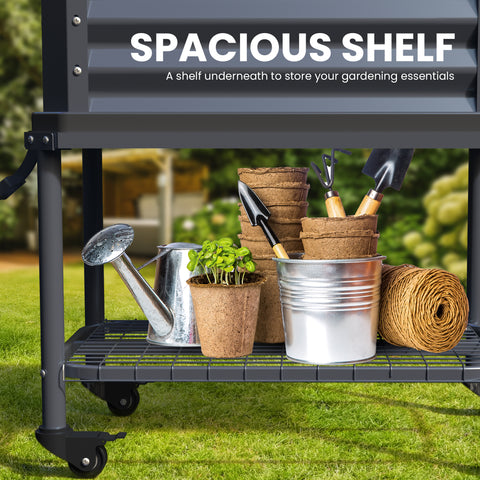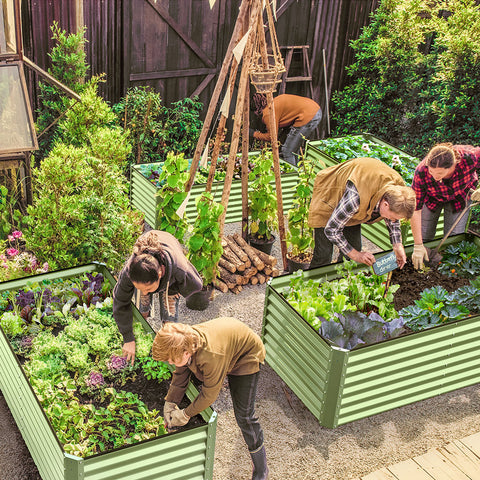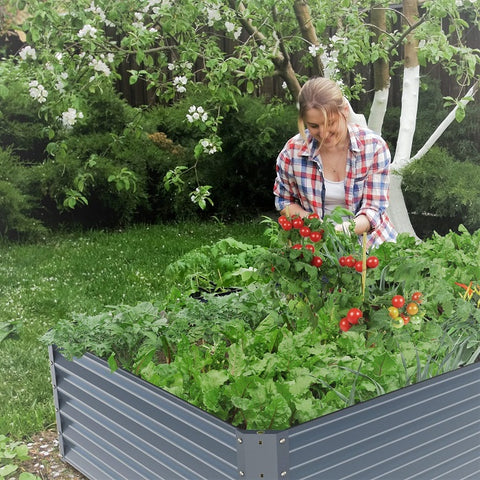With raised garden beds becoming the preferred format for many gardeners, the topic of how to fill a short raised garden bed is crucial. It is important to choose the right garden soil and appropriate improvement. The organic materials you choose determine how the season progresses. The following contents also have some reference value for growing garden beds.
You may have a thriving compost pile to help you fill your lifting bed. Perhaps you want to try filling a raised bed with a soil mixture from a garden bed, or perhaps you want to build your own raised bed using regeneration techniques that rely on a supply of organic matter. Whichever you choose, we'll help you.
It's not difficult or expensive to fill a garden bed, depending on what's around you. Here we will discuss how much soil you need, and how to fill a short raised bed!
What's your low garden bed for?

In order to determine which materials will fill the garden flowerbeds you place in your yard, you will first have to decide what to plant. Most planted garden beds can be done well with garden soil specially formulated for them. However, you can add some modifications depending on the plants you grow.
Homemade compost, for example, is an excellent source of micronutrients for most plants. Peat moss can help you retain moisture in your soil. Native soil will provide beneficial bacteria and mycelium present in the soil profile of your area. Mulching with sawdust, grass clippings or leaves to lock in moisture and protect roots from extreme temperatures can also be a problem.
There may be a high-bed gardening technique you want to try, which involves layering organic material before laying plant-grown soil on top of your low-bed garden. Consider these things before you buy filler.
How many materials do I need?

Measure your soil and calculate how much soil you need. Source: Oregon State University
The material used to fill the bed depends on the size of the bed you're trying to fill!
Through the Epic Gardening Store, we've done the math for each configuration for you. You are welcome to use our chart on the page of each bed to estimate the amount of soil you need.
But if you've built an elevated bed yourself, here's a formula widely used to calculate the volume of the elevated bed and how much soil you'll need:
Width x length x height = total cubic feet of filling material.
Start by measuring each size of the bed in feet. If you end up with a bed that isn't precisely measured in feet, organize it, as this will ensure you have enough soil to fill it when the time comes!
To illustrate my point, suppose you have a new garden bed that is about 4 feet wide, 8 feet long, and 1 foot deep. The calculation for this bed is simple: Multiply 4 x 8 x 1 and you find that you need 32 cubic feet. If you're buying loose soil, that's 1.19 cubic yards of soil, so you want to buy at least 1.5 cubic yards of soil to make sure you have enough to fill. (You'll want the remaining soil to cover other beds or use as containers!) Those who buy bagged soil can usually find 1.5 or 2 cubic foot bags; Assuming you are using 2 cubic feet of bags, you would need 16 bags of soil to completely fill this dirt bed.
If your bed is 4.5 'x 8.5' x 1 '5', then the same amount of garden soil will leave you fairly small. Garden beds should be full, and these little patches of space add up quickly, especially if you water the soil and it settles! I strongly recommend that you prepare enough extra soil to fertilize your garden beds later. As the initial soil settles down and fills every square inch of space, it sinks many inches into the bed. Deep flower beds may still have enough room to plant roots, but you may need to mulch it over shallow beds to keep the garden productive. A few inches of soil can change the world!
About planting area

Before we get into the details of how to fill your new raised bed, let's understand some basic rules of thumb. First, no matter what method you use, remember to provide no less than 8 to 12 inches of soil specifically for planting. If you are using the Original Birdies, you have some space to work with as the shorter Birdies have a height of 15 ". When using a shorter raised bed that is only 8 inches high, do not use filler material and use the entire space for planting. If your seedbed is less than 8 inches, you'll need to dig a trench with no fill underneath to improve the soil and allow enough soil ventilation for roots to grow.









